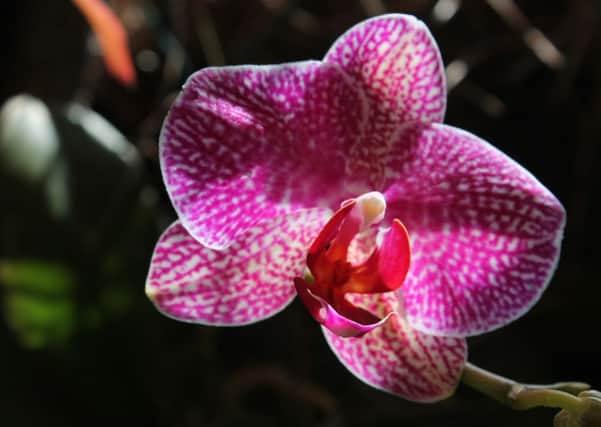Signature shade of the summer’s main event


Everyone opts for yellow when the Tour comes to town – it’s the colour of the top dog, the leader, perhaps the eventual winner of the greatest cycling event in the world.
But yellow isn’t everything, and as the competitors heave their way up the daunting twists and turns of Holme Moss, whose bulk stands tall over the Pennine township of Holmfirth, one man will have his eyes set on a jersey of a different hue – the red and white polka dots of the King of the Mountains.
Advertisement
Hide AdAdvertisement
Hide AdProbably the last thing on his mind is an orchid, but once the stage is over, and he’s sitting down to pasta and a cuppa somewhere near Sheffield, he may just be persuaded to take a look at one of the most exotic, striking and incredible of flowers – Phalaenopsi.
You can’t wear them but you don’t have to wear yourself to a frazzle biking up big hills to own one. And moth orchids (yes, that’s what Phalaenopsi are) are relatively easy to grow. Given the right conditions and a bit of TLC and they should keep going for years.
They come in many different sizes and colours, including striped, spotted, mottled, blotched plain white or a combination – and the red and white polka dotted varieties could have been tailor-made for the Tour de France’s top climber.
A moth orchid doesn’t like a heavy compost but prefers its roots to dry out between waterings. So, a well-aerated, free-draining compost is best.
Advertisement
Hide AdAdvertisement
Hide AdWater well from the top, taking care to keep the centre of the plant dry, and then leave it to drain.
Rain water is recommended but distilled water can be used instead as long as you remember to add fertiliser. Feed your plant regularly with orchid fertiliser when you water.
Don’t reduce the night temperature below 12C (55F). Higher day-time temperatures are no problem as long as your plant is in a shady place and humidity and airflow are good.
Being accustomed to the dappled light of the forest, moth orchids dislike direct sunlight, especially through glass. Indirect sunlight is ideal.
Advertisement
Hide AdAdvertisement
Hide AdWhen the flowers die, cut back stem just above a node, leaving 30cm (12ins) or so of stem. Occasionally a leaf may go yellow and drop off. Don’t worry, it’s quite normal. If your orchid should suffer serious leaf loss, stop watering and feeding for four weeks. This can encourage new roots.
• How much yellow can one county take? Yorkshire is supposed to be a green and pleasant land but 2014 has seen the natural order turned on its head.
Yellow – “of the colour between green and orange in the spectrum, a primary subtractive colour complementary to blue” – is here to stay; at least until the Tour de France has headed back home across the Channel.
We’ve had the daffodils, the aconites, the tulips and forsythia; now we have pot marigolds, chrysanthemums, red-hot pokers, numerous potentillas, rudbeckia, sedum and, of course, French marigolds. But how many gardeners have gone for something equally as yellow but less common and as petite and pretty as any plant gracing the route of this year’s Tour?
Advertisement
Hide AdAdvertisement
Hide AdThe cyclists aren’t likely to stop to enjoy the gardens en route, but the cavalcade of visitors heading this way could be in for a treat, particularly where walls and banks have been clothed in Corydalis lutea
Also known as Yellow Fumitory, this little gem is perfect for planting on a rocky wall or slope, where the vivid yellow blooms will carry on appearing for months. It thrives on neglect, and will self-seed all over the place.
And if that doesn’t appeal, try a few day lilies, which as their name implies, produce blooms which rarely last for more than a few hours. But where they fail in longevity, they more than make up for in numbers. Hemerocallis are simple to grow, thrive in a sunny spot and aren’t too demanding about soil as long as it’s moist but well-drained.
Still not satisfied? Then try the monkey flower, Mimulus, which thrives where the soil is damp to form spreading mats of foliage topped by narrow spikes of deep yellow blooms.
Advertisement
Hide AdAdvertisement
Hide AdMimulus can go on flowering for month, but they aren’t long-lived and it’s best to divide them every spring to make sure there are plenty of spare plants to replace those which fade away.
Me? I’d go for broom. It’s in your face, bright and beautiful. Don’t mention that word to the cyclists though – the “broom wagon” is the name for the vehicle that picks up stragglers) who are unable to make it to the finish of the race within the time permitted...